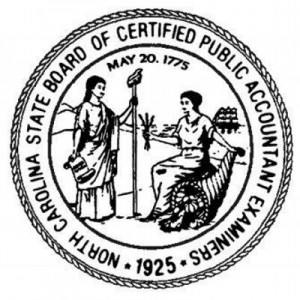by Cody Taylor
 Over the last decade the Internal Revenue Service (IRS) has been faced with a brand new subject courtesy of our interconnected world: virtual currency. Bitcoin is the most well-known but there are over 150 virtual currencies worldwide with some of the other larger ones being Litecoin, Darkcoin and Peercoin. As these currencies have popped up and have become more popular the IRS needed to decide how to handle transactions conducted in these new currencies. Bitcoin for instance is accepted at mainstream retailers such as Overstock.com, Dish Network and Expedia, among others.
Over the last decade the Internal Revenue Service (IRS) has been faced with a brand new subject courtesy of our interconnected world: virtual currency. Bitcoin is the most well-known but there are over 150 virtual currencies worldwide with some of the other larger ones being Litecoin, Darkcoin and Peercoin. As these currencies have popped up and have become more popular the IRS needed to decide how to handle transactions conducted in these new currencies. Bitcoin for instance is accepted at mainstream retailers such as Overstock.com, Dish Network and Expedia, among others.
The IRS issued guidance in the form of answers to Frequently Asked Questions (FAQs). This setup tries to provide an overview for how transactions in virtual currencies will be handled for federal tax purposes. What follows is an excerpt of the FAQs from IRS Notice 2014-21:
Q-1: How is virtual currency treated for federal tax purposes?
A-1: For federal tax purposes, virtual currency is treated as property. General tax principles applicable to property transactions apply to transactions using virtual currency.
Q-2: Is virtual currency treated as currency for purposes of determining whether a transaction results in foreign currency gain or loss under U.S. federal tax laws?
A-2: No. Under currently applicable law, virtual currency is not treated as currency that could generate foreign currency gain or loss for U.S. federal tax purposes.
Q-3: Must a taxpayer who receives virtual currency as payment for goods or services include in computing gross income the fair market value of the virtual currency?
A-3: Yes. A taxpayer who receives virtual currency as payment for goods or services must, in computing gross income, include the fair market value of the virtual currency, 3 measured in U.S. dollars, as of the date that the virtual currency was received. See Publication 525, Taxable and Nontaxable Income, for more information on miscellaneous income from exchanges involving property or services.
Q-4: What is the basis of virtual currency received as payment for goods or services in Q&A-3?
A-4: The basis of virtual currency that a taxpayer receives as payment for goods or services in Q&A-3 is the fair market value of the virtual currency in U.S. dollars as of the date of receipt. See Publication 551, Basis of Assets, for more information on the computation of basis when property is received for goods or services.
Q-5: How is the fair market value of virtual currency determined?
A-5: For U.S. tax purposes, transactions using virtual currency must be reported in U.S. dollars. Therefore, taxpayers will be required to determine the fair market value of virtual currency in U.S. dollars as of the date of payment or receipt. If a virtual currency is listed on an exchange and the exchange rate is established by market supply and demand, the fair market value of the virtual currency is determined by converting the virtual currency into U.S. dollars (or into another real currency which in turn can be converted into U.S. dollars) at the exchange rate, in a reasonable manner that is consistently applied.
Q-6: Does a taxpayer have gain or loss upon an exchange of virtual currency for other property?
A-6: Yes. If the fair market value of property received in exchange for virtual currency exceeds the taxpayer’s adjusted basis of the virtual currency, the taxpayer has taxable gain. The taxpayer has a loss if the fair market value of the property received is less than the adjusted basis of the virtual currency. See Publication 544, Sales and Other Dispositions of Assets, for information about the tax treatment of sales and exchanges, such as whether a loss is deductible.
The rest of IRS Notice 2014-21 and the remaining FAQs can be found at IRS Notice 2014-21 – Federal Taxation for Virtual Currencies. At the state level the details of how virtual currency will be handled is still being worked out. North Carolina currently has a bill in the state congress that addresses how the state wants to handle a number of issues associated with virtual currencies. They even have a Virtual Currency Corner on the North Carolina Commissioner of Banks website dedicated to current virtual currency news and legislation.
If you have any dealings with virtual currency or might in the future, we would be happy to help answer any questions you may have. Please contact our office for additional information.
Cody ([email protected]) is part of our tax staff at Langdon & Company LLP. He focuses on high-net wealth individuals, and other various types of tax projects.












 by Lee Byrd
by Lee Byrd
 me Tax Return, you should file a Form
me Tax Return, you should file a Form 


 by Kendall Tyson
by Kendall Tyson
 Over the last decade the Internal Revenue Service (IRS) has been faced with a brand new subject courtesy of our interconnected world: virtual currency. Bitcoin is the most well-known but there are over 150 virtual currencies worldwide with some of the other larger ones being Litecoin, Darkcoin and Peercoin. As these currencies have popped up and have become more popular the IRS needed to decide how to handle transactions conducted in these new currencies. Bitcoin for instance is accepted at mainstream retailers such as Overstock.com, Dish Network and Expedia, among others.
Over the last decade the Internal Revenue Service (IRS) has been faced with a brand new subject courtesy of our interconnected world: virtual currency. Bitcoin is the most well-known but there are over 150 virtual currencies worldwide with some of the other larger ones being Litecoin, Darkcoin and Peercoin. As these currencies have popped up and have become more popular the IRS needed to decide how to handle transactions conducted in these new currencies. Bitcoin for instance is accepted at mainstream retailers such as Overstock.com, Dish Network and Expedia, among others.